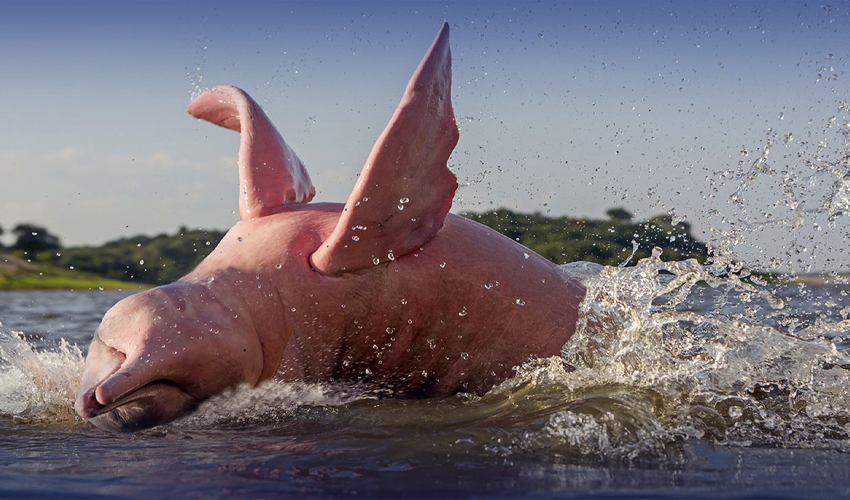120 Amazon River dolphins, including pink and grey ones, have been discovered lifeless in a tributary of the Amazon River in Brazil.
These unique dolphins are already considered threatened species and are listed on the IUCN Red List.
Experts believe that the severe drought and scorching temperatures in the Tefe Lake region are the likely causes of this tragic event.
The water temperatures in the area exceeded 39°C (102°F) in recent days, creating a hostile environment for these delicate creatures.
Additionally, thousands of fish have also died due to these harsh conditions.
Miriam Marmontel, a researcher at the Mamiraua Institute, while talking to Al Jazeera, expressed her concern, noting that nearly 80% of the discovered carcasses are pink dolphins, locally known as "boto." This significant loss poses a threat to their population in Lake Tefe.
Scientists are currently investigating the cause of this surge in dolphin mortality, including the possibility of bacterial infections.
Notably, a distressing pattern emerged as a significant number of carcasses appeared when Lake Tefe's water temperature reached an unprecedented 39°C, more than 10 degrees above the usual average for this season.
Alarmingly, water temperatures again rose to 37°C (99°F) recently.
Brazil's Chico Mendes Institute for Biodiversity Conservation has promptly taken action, deploying veterinarians and experts to rescue any surviving dolphins in the area.
While the exact cause is still under examination, environmental activists have pointed to climate change as a contributing factor, making droughts and heatwaves more severe and frequent.



























